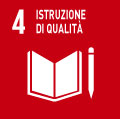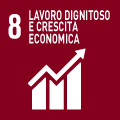- Docente: Gabriella Chiesa
- Crediti formativi: 4
- SSD: SECS-P/01
- Lingua di insegnamento: Inglese
- Modalità didattica: Convenzionale - Lezioni in presenza
- Campus: Bologna
- Corso: Laurea in Economics and Finance (cod. 8835)
-
dal 16/09/2024 al 15/10/2024
Conoscenze e abilità da conseguire
Monetary policy has the ability to shape all economic interactions in a way that no other policy does. However, the recent experience of the Great Recession has raised questions in monetary policy surrounding the limits to this power. At the same time, the development of financial markets and institutions have questioned the definition of “money” and inspired new methods and policies to address these challenges. Within the area of contemporary monetary economics and monetary policy, students will learn the transmission mechanism of monetary policy in a market based economy, the role played by market liquidity and sovereign debt, the policy tools of quantitative and qualitative easing, and will acquire a deep understanding of the policy issues in the Euro Area.
Contenuti
Monetary aggregates and the Money multiplier
Behind the Scenes
- Money creation in the modern economy
- Banks and Liquidity Creation
The Monetary Transmission Mechanism, and the role of risk:
- Theory
- The “broken transmission mechanism”: Evidence from
the great financial crisis
the sovereign debt crisis
Financial Deepening:
- Households’ money: bank debt
- Cash pools’ money: sovereign debt and triple A securities
- Nowadays interbank/money market: Repo Market
- Government debt securities as “quasi money”: Theory and evidence
Central Banks’ Policies
- From inflation targeting to (full) employment targeting
- Nowadays intermediate target: financial markets’ stability
Focus:
- From Quantity Easing to Qualitative Easing: Japan, USA, ECB
- The Euro Area Dilemma: Monetary Dominance versus Fiscal Dominance
Testi/Bibliografia
All the material is on the "Virtual Learning” platform.
There are 10 sections providing the material for the 10 lectures. In each section you find a file "Instruction" that provides a guideline of the material in that section.
Lectures are meant to be interactive, please read the material of the section before the lecture.
Metodi didattici
Lectures in class, discussion of financial events
Modalità di verifica e valutazione dell'apprendimento
The final score results from:
• Homeworks during the course (50% ) ,
• A written term paper, either theoretical or empirical, on a topic connected to the course and agreed with the lecturer (50%)
The term paper can possibly be the basis for the final exam's thesis
Strumenti a supporto della didattica
Slides, PC
Websites of financial press -- Financial Times, Bloomberg, The Economist
"Virtual Learning” platform: 10 sections providing the material for the 10 lectures. Each section contains a file "Instruction" that provides a guideline of the material in that section.
Lectures are meant to be interactive, please read the material of the section before the lecture.
Orario di ricevimento
Consulta il sito web di Gabriella Chiesa
SDGs


L'insegnamento contribuisce al perseguimento degli Obiettivi di Sviluppo Sostenibile dell'Agenda 2030 dell'ONU.
